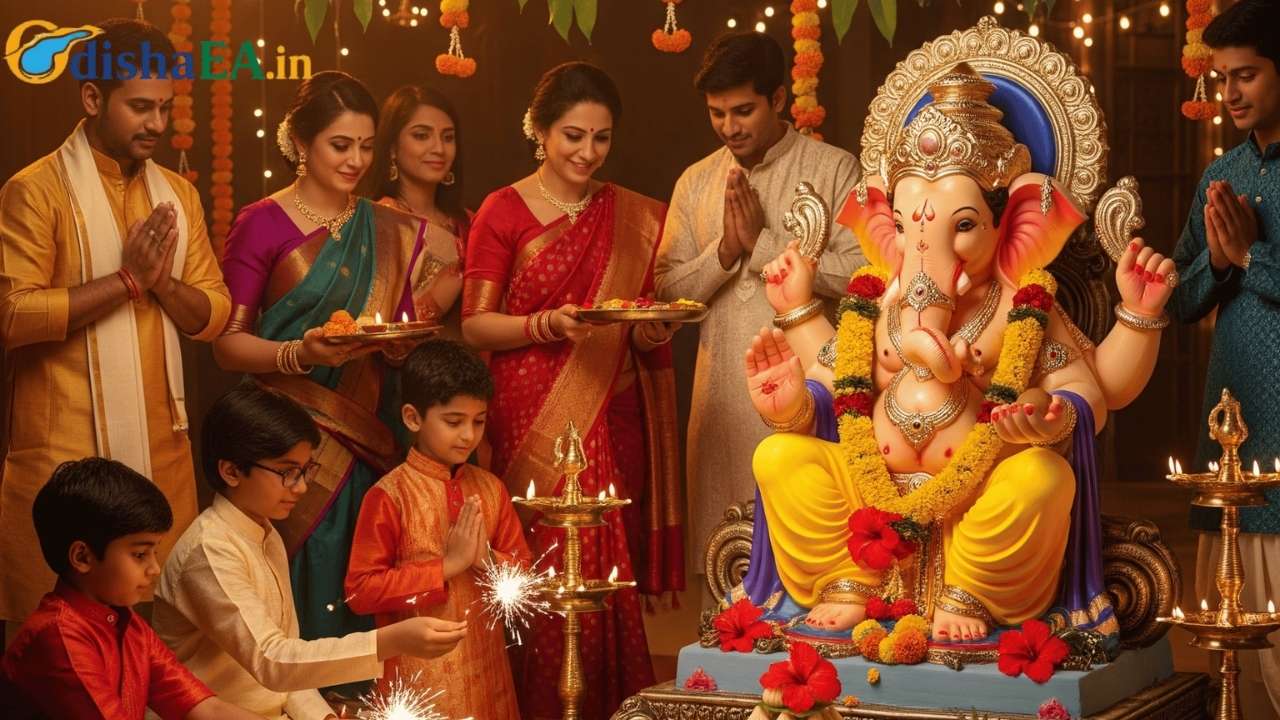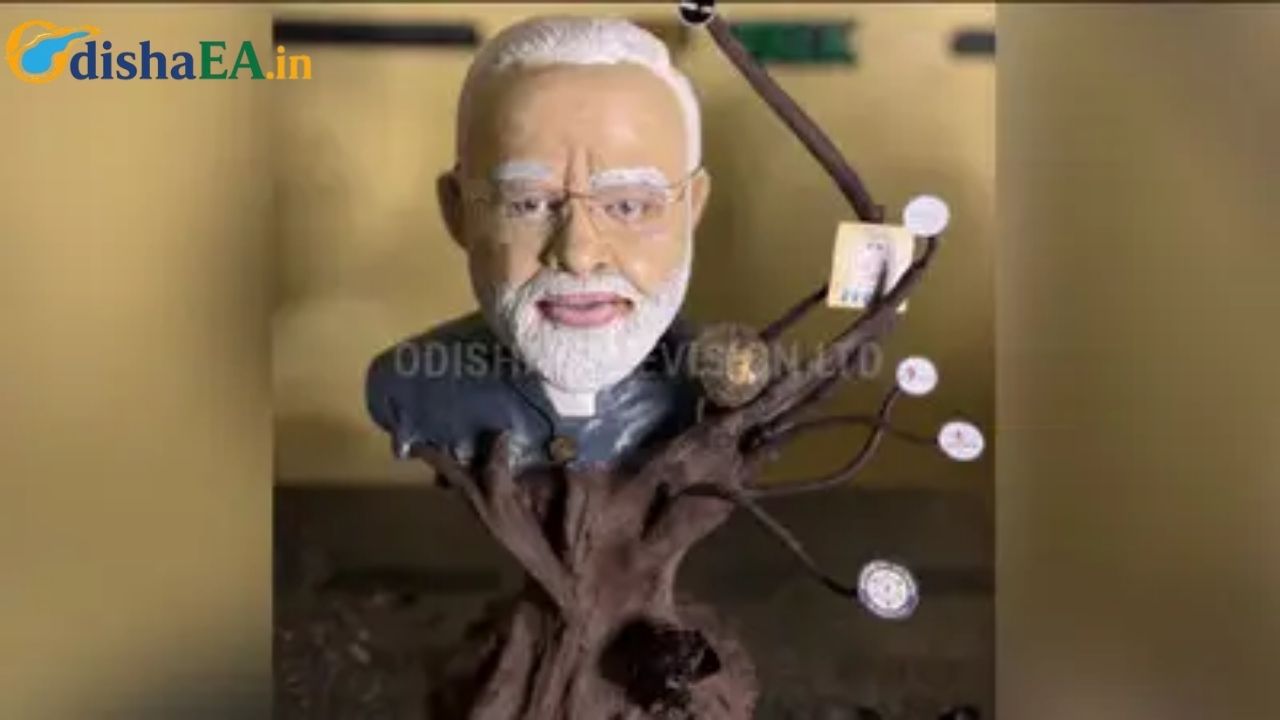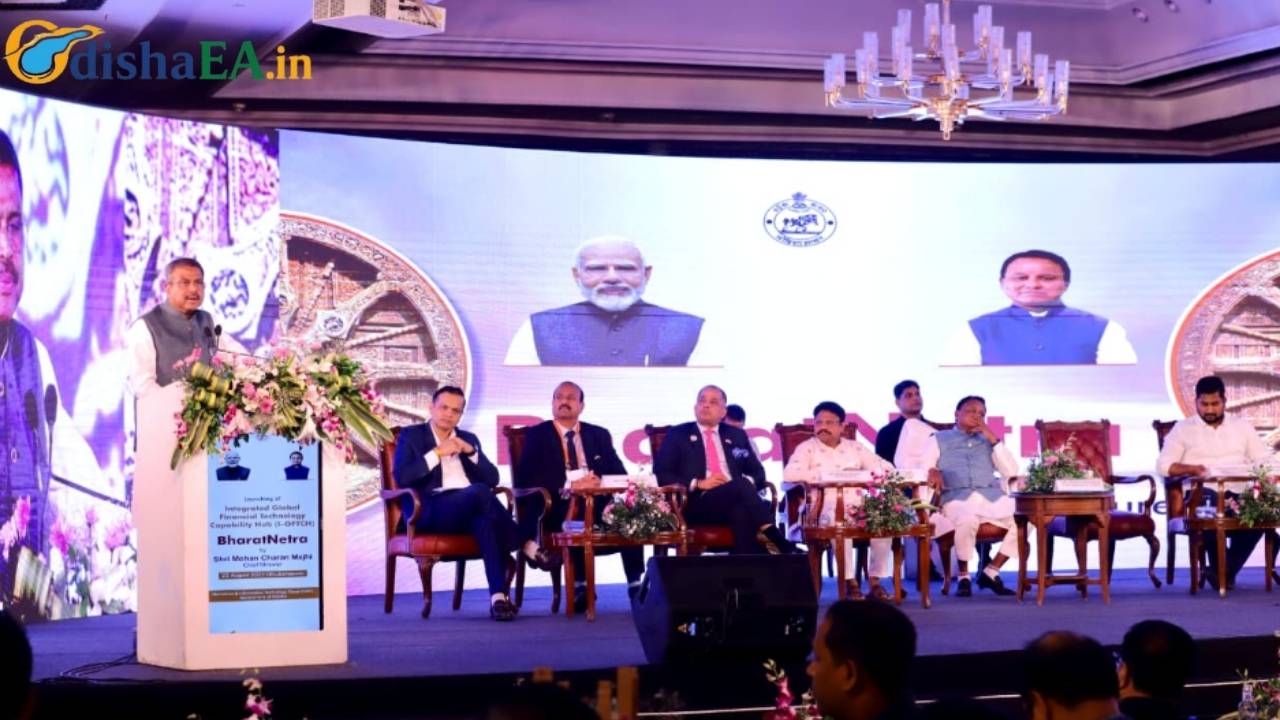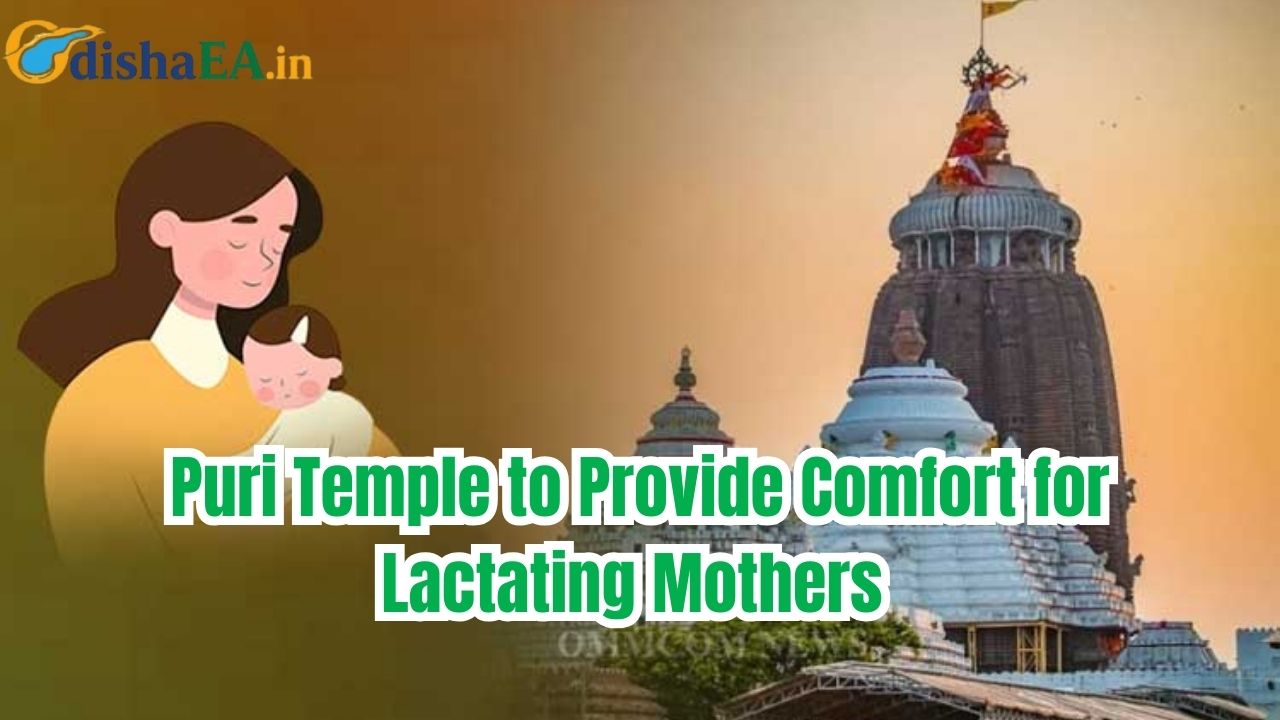If you’ve ever heard about Ganesh Puja in Odisha, you know it’s not just a festival—it’s a whole vibe. Think giant, colorful idols of Lord Ganesha, music that makes the streets come alive, food that smells like heaven, and people from every walk of life coming together. From massive processions in Cuttack to school-based celebrations in Bhubaneswar, this tradition blends spirituality, art, and culture into one big, unforgettable party.
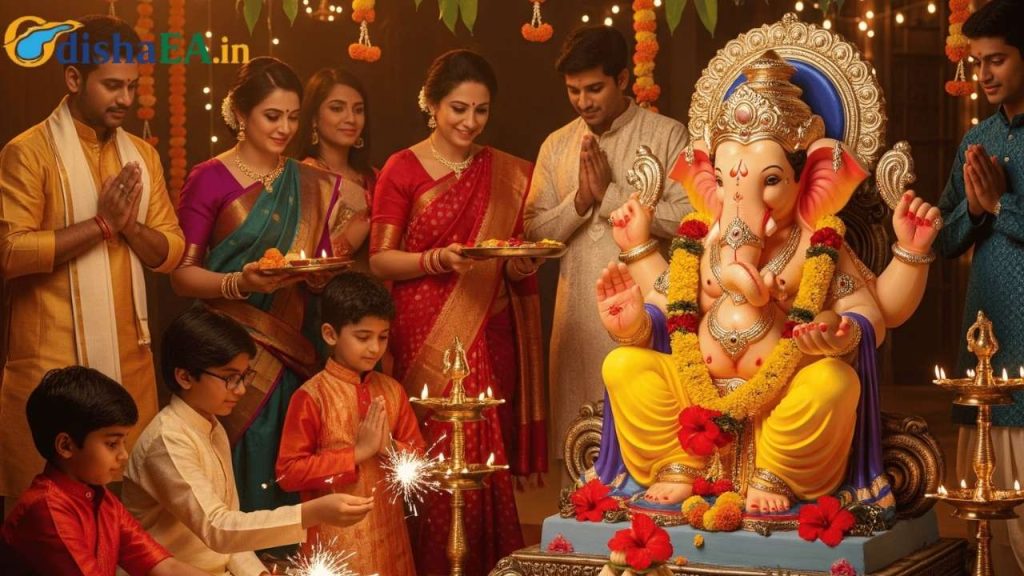
But what makes Odisha’s Ganesh Puja so unique compared to, say, the grand spectacles in Maharashtra or the quieter rituals in southern India? That’s what we’ll dive into today. Along the way, we’ll unpack the traditions, highlight some jaw-dropping examples, and even give you practical takeaways—because festivals are more than just celebrations; they’re lessons in community, resilience, and creativity.
Odisha’s Ganesh Puja
| Aspect | Details |
|---|---|
| Largest Idols | Up to 61 feet tall in Bhubaneswar; Cuttack hosted a 58-foot idol (Times of India) |
| Unique Creations | 15-foot idol made of 25,000 glass bangles in Baripada (Economic Times) |
| Student-Centered | Schools and colleges host their own pujas, blending education and devotion |
| Community Foods | Traditional sweets: Modak, Laddoo, Chuda Ghasa, Bundi-Seo |
| Challenges | Floods in Jajpur & Kendrapada disrupted artisans’ work (Times of India) |
| Official Reference | Odisha Government Festivals Page |
Odisha’s Ganesh Puja isn’t just another festival—it’s a showcase of devotion, creativity, and community spirit. From skyscraper-sized idols to postcard invites by college students, every detail reflects the state’s unique cultural DNA. Sure, floods and challenges remind us of life’s unpredictability, but the resilience of artisans and communities proves that traditions can weather any storm.
If you’re looking for a festival that mixes art, learning, and celebration with a strong cultural punch, Odisha’s Ganesh Puja is where the magic happens.
The Heart of Ganesh Puja in Odisha
Ganesh Puja, also called Ganesh Chaturthi, celebrates Lord Ganesha—the elephant-headed god of wisdom, prosperity, and remover of obstacles. While states like Maharashtra get most of the buzz thanks to Bollywood-style celebrations, Odisha’s twist is equally spectacular, if not more culturally layered.
Here, it’s not just about idols and rituals. It’s about artistry, students, and community spirit. Schools, colleges, and universities are the real MVPs, making the celebration more youthful and deeply connected to education.
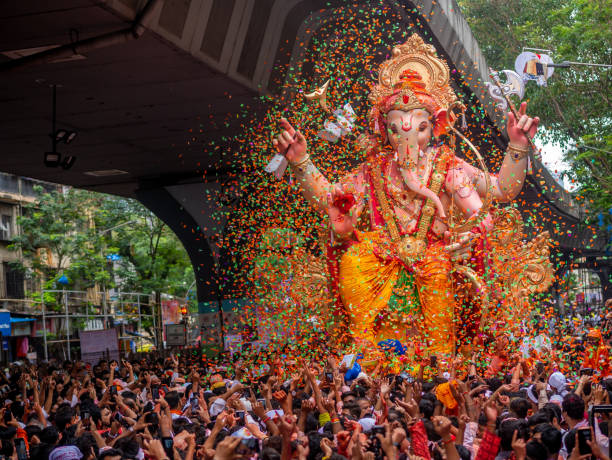
Giant Idols and Artistic Expression
One of the show-stoppers of Odisha’s Ganesh Puja is the giant idols. In Bhubaneswar, some organizers go as high as 61 feet, while Cuttack isn’t far behind with its own 58-foot idols. That’s taller than a five-story building—yeah, let that sink in!
In Baripada, creativity took center stage with a 15-foot idol made from 25,000 glass bangles. Imagine the sparkle when light hits it—it’s like fireworks without the noise. Tribal songs, dances, and even competitions were part of the celebration, turning the festival into a cultural carnival.
These aren’t just statues—they’re statements. They highlight Odisha’s craftsmanship, from bamboo structures to clay artistry, and showcase how tradition and innovation can work hand-in-hand.
Schools, Students, and Postcards
Here’s the twist: in Odisha, Ganesh Puja has a strong educational connection. Students see Lord Ganesha as the god of learning, so schools and colleges often lead the festivities.
- In Phulbani, Kandhamal, students revived an old-school vibe (pun intended!) by sending eco-friendly postcards—each just 50 paise—to invite guests. Instead of flashy digital invites, they tapped into nostalgia while promoting sustainability.
- Many schools pause classes during the festival, resuming only after Visarjan (idol immersion). This isn’t just a break from homework—it’s a way to tie learning with life’s bigger lessons: devotion, creativity, and teamwork.
Food, Sweets, and Market Buzz
Festivals without food? Nah, doesn’t happen. Odisha’s Ganesh Puja means markets full of bamboo frames, decorative lights, and sweets that you just can’t resist.
Popular dishes include:
- Modak (Ganesha’s favorite dumpling-style sweet).
- Chuda Ghasa, a traditional Odia delicacy made with flattened rice, sugar, and coconut.
- Bundi-Seo, crunchy-sweet perfection.
- Rasi Laddoo, packed with sesame seeds and jaggery for energy.
Sweet shops report a 20–30% boost in demand during the festival (Times of India).
Challenges: Floods and Resilience
Not everything is rosy. In Jajpur and Kendrapada, floods arrived just days before the festival, leaving artisans worried about sales. Many families depend entirely on idol-making for their yearly income. When celebrations get muted, their financial stability takes a direct hit.
This side of the story reminds us: festivals are about joy, but they’re also about resilience. Communities often rally to support artisans, but the challenge remains real.
Processions and Visarjan (Immersion)
The festival usually ends with grand processions where idols are carried through streets, accompanied by music, chants, and dancing crowds. Finally, the idols are immersed in rivers or ponds—a symbolic way of returning Ganesha to nature.
Odisha adds its own flavor here. In some regions, idols are pulled on chariots, echoing Puri’s famous Rath Yatra. This gives the rituals a deeper spiritual and cultural resonance.
Guide to Experiencing Odisha’s Ganesh Puja
If you’re ever in Odisha during Ganesh Puja, here’s how you can soak it all in:
Step 1: Visit Local Pandals
Check out community-built pandals (temporary structures). Each neighborhood competes to outdo the other with creativity and themes.
Step 2: Taste the Food
Don’t miss the Modaks and Chuda Ghasa. Pro tip: head to local sweet shops early before they sell out.
Step 3: Join the Student Celebrations
If you know locals, try visiting a school or college puja. The youthful energy and creativity are contagious.
Step 4: Watch the Procession
Plan your day around the Visarjan procession. It’s loud, colorful, and unforgettable—bring earplugs if you’re sensitive to sound!
Step 5: Respect Traditions
Remember, while it feels like a party, it’s still a religious event. Be mindful of dress codes and local customs.
Nanda Utsav at Puri Srimandir: A Divine Continuation of Janmashtami
Odisha Plans Comprehensive Heritage Policy to Safeguard 3,000+ Monuments
Managing Odisha’s Elephant Habitats: Forest Beats to Be Classified for Improved Conservation
FAQs
Q1: When is Ganesh Puja celebrated in Odisha?
Ganesh Puja usually falls in September (the Hindu month of Bhadrapada). Dates change every year based on the lunar calendar.
Q2: How is Odisha’s Ganesh Puja different from Maharashtra’s?
Maharashtra goes big on public pandals and Bollywood-style fanfare, while Odisha emphasizes students, education, and artistry alongside community rituals.
Q3: Are eco-friendly idols common?
Yes. Many communities are now using clay and natural dyes to reduce pollution during immersion.
Q4: What foods are a must-try?
Definitely try Modak, Rasi Laddoo, and Chuda Ghasa. Local sweet shops are your best bet.
Q5: Can tourists join the celebrations?
Absolutely! Visitors are often welcomed, especially at public pandals and processions.

